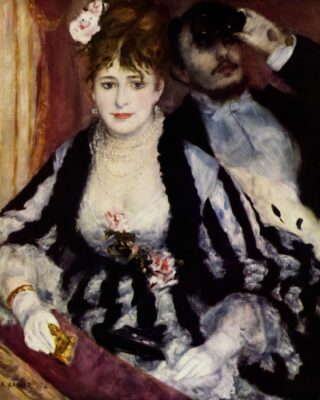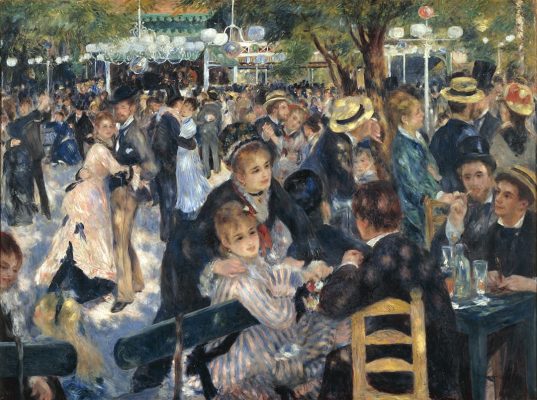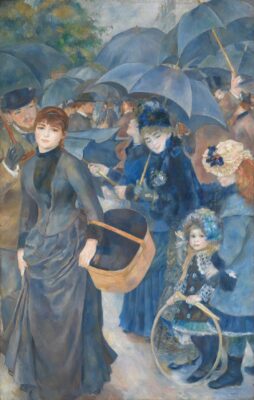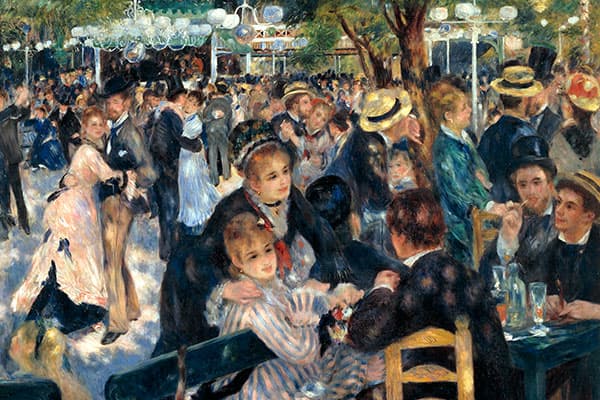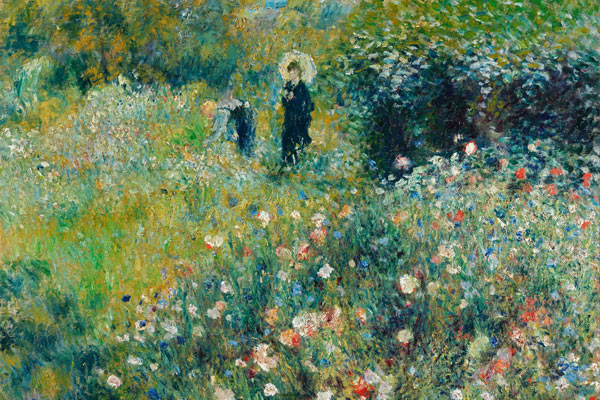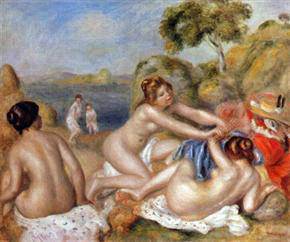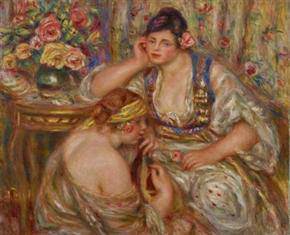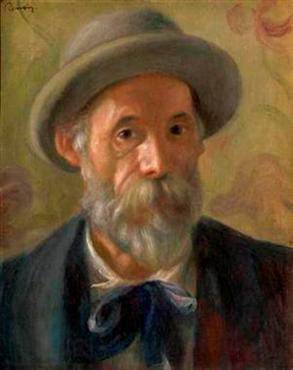Pierre-Auguste Renoir
“For me, a painting must be a pleasant thing, joyous and pretty – yes, pretty. There are too many unpleasant things in life for us to fabricate still more.”
Pierre-Auguste Renoir
Among all the painters of the Impressionist group, Pierre-Auguste Renoir (1841-1919) was possibly the most prolific, the most focused on classical themes as opposed to the modernity of iron bridges or train stations, and the one with the most disconcerting career. A staunch defender of Impressionism during the 1870s, participating in all the Impressionist Exhibitions, in the following decade he abruptly abandoned the Impressionist style, but not -as was the case with Cézanne or Gauguin- to venture into the unexplored territories of what has been called Post-Impressionism, but to return to a more classical style, of an “Ingresque” precision, which would evolve, during the last two decades of his life, towards a personal classicism in which the influences of masters such as Rubens can be appreciated.
Imagen: Pierre-Auguste Renoir: “Self portrait”, 1875. Oil on canvas, 39.1 x 31.7 cm. Clark Art Institute
Many contemporary authors have seen in Renoir’s work a certain superficiality. Unlike contemporaries such as Monet or Manet, Renoir, as noted above, never seemed overly fascinated by modernity, much less endowed his painting with social criticism “Renoir painted reality as he saw it and affirmed it: the taste for life of the well-to-do, on whose sympathies he had to rely in order to exist as a painter, and the joys of the petit-bourgeois bohemia, to which he belonged and which appeared civilized, in no way unruly or tragic” (Peter H. Feist, “Renoir”, 1990)
Renoir was born in Limoges in 1841, although he moved with his family to Paris in 1844. He began his painting studies at the age of 13, and became a regular visitor to the Louvre Museum, copying the works of old masters, such as Delacroix, although he also had occasion to admire the works of Manet, especially his “Le Déjeuner sur l’Herbe”. In 1867, Renoir obtained his first success by exhibiting “Lise (Woman with a Parasol)“, a portrait of his lover, muse, and model, Lise Tréhot, which was followed by others such as “Odalisque (Woman of Algiers)” the following year. However, his “Riding in the bois de Boulogne” was rejected in 1873, and was only exhibited at the “Salon des Refusés“, along with other works by Impressionist painters. This led Renoir to become disillusioned with the “official” critics, and to relate more with other members of the Impressionist movement.
In 1874, he exhibited several works at the First Impressionist Exhibition, including “La loge”, often considered his first masterpiece. Throughout the 1870s, Renoir created some of the most recognizable works of Impressionism, such as “The Swing” or “Dance at the Moulin de la Galette“, chosen by theartwolf.com in 2006 as one of the 50 masterpieces of painting, and sometimes called “the most beautiful painting of the nineteenth century”.
Pierre-Auguste Renoir: “La loge (The Theatre Box)”, 1874. Oil on canvas, 80 x 63.5 cm. London, The Courtauld Institute of Art. Pierre-Auguste Renoir: “Bal du moulin de la Galette”, 1876. Oil on canvas, 131 x 175 cm. Paris, Musée d’Orsay. Pierre-Auguste Renoir: “The umbrellas”, 1883. Oil on canvas, 180 x 115 cm. National Gallery, London
At the beginning of the following decade, he met his future wife, Aline Charigot. By then a change in Renoir’s style was already noticeable, gradually abandoning the agility and lightness of Impressionism to adopt a more classical style, reflecting the painter’s growing admiration for Jean-Auguste-Dominique Ingres. This change had already begun to be noticed in “Luncheon of the Boating Party“, his important work of 1881, but it is evident in later works as “The Umbrellas” (1883), now in the National Gallery of London.
From then until his death in 1919, Renoir did not return to the Impressionist style, focusing on works of great sensuality, especially his groups of female nudes, such as “Les Grandes Baigneuses” (1884-87) in the Philadelphia Museum of Art, or “La sortie du bain” (1910) in the Barnes Foundation in Philadelphia. This museum, by the way, houses what is perhaps the most complete collection of the artist’s works, with 181 paintings. Although today Renoir does not enjoy the same recognition as artists of his time such as Monet or Cézanne, his second version of the “Bal du moulin de la Galette” was auctioned in 1990 for $78 million, then the second highest price ever paid for a work of art.
G. Fernández · theartwolf.com
Masterworks by Pierre Auguste Renoir
More about Pierre Auguste Renoir
Follow us on:


